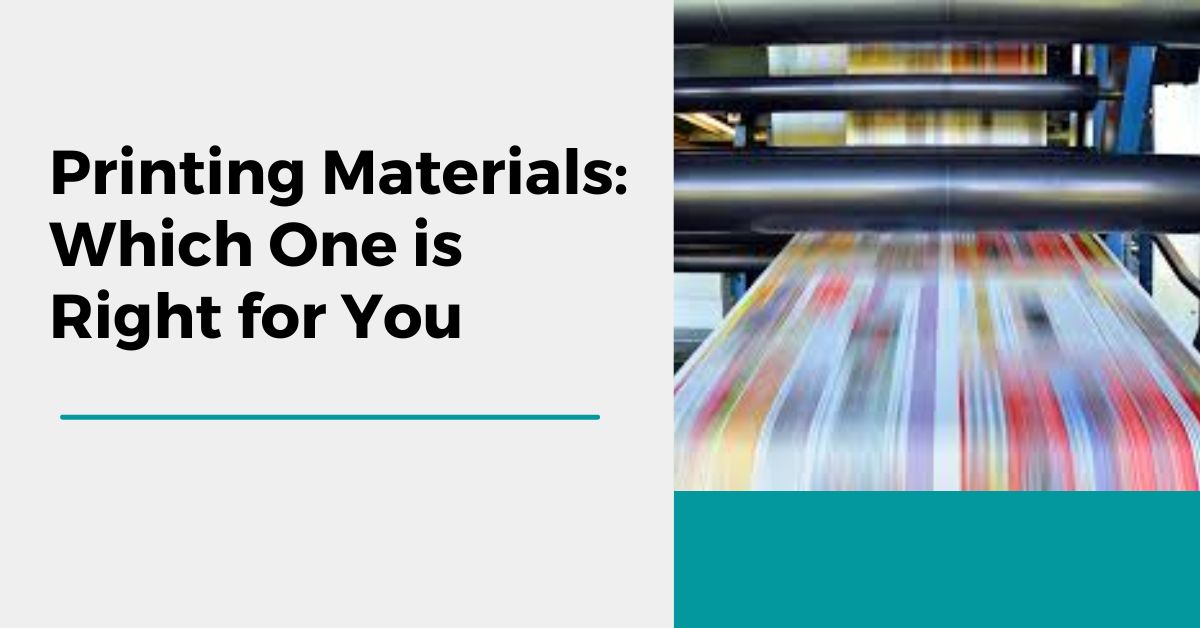In the realm of printing, the choice of materials is a critical decision that can significantly impact the quality and effectiveness of your printed materials. Whether you’re producing business cards, flyers, brochures, or posters, selecting the right printing material is essential to convey the right message and make a lasting impression. In this blog post, we’ll explore different paper types and materials suitable for various printing needs, helping you make informed choices for your next print project.
1.Paper Weight and Thickness:
One of the first considerations when choosing printing materials is the weight and thickness of the paper. This is often measured in pounds (lb) or grams per square meter (gsm). Lighter weight papers, such as 20 lb bond, are suitable for everyday printing needs like documents and letters. On the other hand, heavier weights like 80 lb cover are ideal for business cards or premium brochures.
2.Coated vs. Uncoated:
Coated and uncoated papers offer different finishes and are suitable for distinct purposes. Coated papers have a smooth finish that provides vibrant color reproduction and sharp images. They’re ideal for marketing materials like brochures and catalogs. Uncoated papers, with their natural texture, are perfect for items like letterheads and envelopes, providing a more classic and tactile feel.
3.Glossy vs. Matte Finish:
The finish of your printing material contributes to its overall look and feel. Glossy finishes are shiny and reflective, making colors appear more vibrant. This finish is often preferred for photographs and promotional materials. Matte finishes, on the other hand, have a non-reflective surface, providing a more subdued and sophisticated appearance. They are often chosen for items like business cards and presentations.
4.Recycled and Eco-Friendly Options:
As sustainability becomes a more significant concern, there is a growing demand for recycled and eco-friendly printing materials. Recycled papers are made from post-consumer waste, reducing the environmental impact. Additionally, some printing materials are certified by organizations like the Forest Stewardship Council (FSC), indicating that they come from responsibly managed forests.
5.Specialty Papers:
For unique and specific needs, consider specialty papers. Textured papers can add a tactile element to your prints, enhancing the overall experience. Metallic and pearlescent papers add a touch of luxury and elegance, making them suitable for special occasions or premium branding.
6. Water-Resistant and Tear-Resistant Materials:
For materials that may be exposed to the elements or need extra durability, water-resistant and tear-resistant materials are worth considering. These materials are designed to withstand moisture and physical stress, ensuring your prints remain in pristine condition.
In conclusion
Choosing the right printing material involves considering factors such as weight, coating, finish, sustainability, and special features. Each type of material serves a specific purpose, and understanding these distinctions will empower you to make informed decisions for your printing needs. Whether you’re crafting business collateral, event invitations, or promotional materials, the right printing material can elevate your project and leave a lasting impression on your audience. So, the next time you embark on a print project, take a moment to explore the myriad options available and choose the one that aligns perfectly with your vision.
FAQ:
Q1: What factors should I consider when choosing printing materials?
A1: Consider factors such as paper weight, coating, finish, sustainability, and special features based on your specific printing needs.
Q2: Is there a difference between coated and uncoated papers?
A2: Yes, coated papers have a smooth finish for vibrant color reproduction, while uncoated papers provide a more classic, tactile feel.
Q3: Can you recommend eco-friendly printing materials?
A3: Look for papers certified by organizations like the Forest Stewardship Council (FSC) or opt for recycled papers made from post-consumer waste.
Q4: What is the advantage of using water-resistant and tear-resistant materials?
A4: These materials are ideal for prints exposed to the elements or requiring extra durability, ensuring they remain in pristine condition.
Q5: Are there specialty papers for unique printing needs?
A5: Yes, textured, metallic, and pearlescent papers are considered specialty options, adding unique elements to your prints for specific occasions or premium branding.



